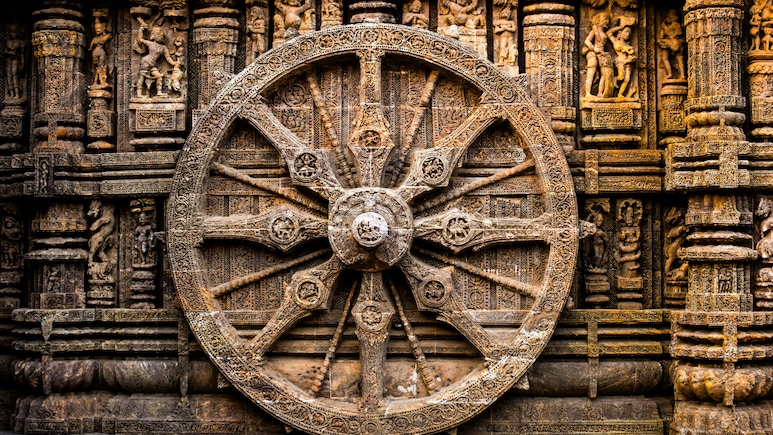
On the eastern coast of Odisha, just a short drive from Puri, stands the Konark Sun Temple, a 13th-century marvel that continues to draw travellers, historians and pilgrims from around the world. At first glance, it appears as a breathtaking stone chariot dedicated to Surya, the Sun God. But look closer, and you will find missing towers, vanished rivers and legends that refuse to fade. So, why did this grand temple fall into ruin? Was it ever truly completed? And what happened to the sacred river that once flowed beside it? Whether you are a heritage lover, a curious traveller or someone drawn to stories carved in stone, Konark invites you to uncover its mysteries. Let us journey through its lost history, one sculpture and forgotten tale at a time.
Also Read: Odisha Beyond Rath Yatra: 6 Places That Deserve A Spot On Your Travel Bucket List
Konark Sun Temple: A UNESCO World Heritage Site
Built in the 13th century by King Narasimhadeva I of the Eastern Ganga dynasty, Konark Sun Temple was envisioned as a celestial chariot for Surya. Its 24 intricately carved wheels represent the hours of the day, each detailed with motifs of seasons, rituals and daily life. These wheels also function as sundials, a testament to the temple's astronomical precision.
Seven stone horses pull the chariot forward, symbolising the seven days of the week and the cosmic motion of the sun across the sky. The temple's alignment ensures that the first rays of sunlight once fell directly on the deity. Konark is a masterpiece of Kalinga architecture and a symbol of Odisha's cultural pride. In 1984, it was declared a UNESCO World Heritage Site, recognised for its artistic excellence, spiritual devotion and engineering brilliance.
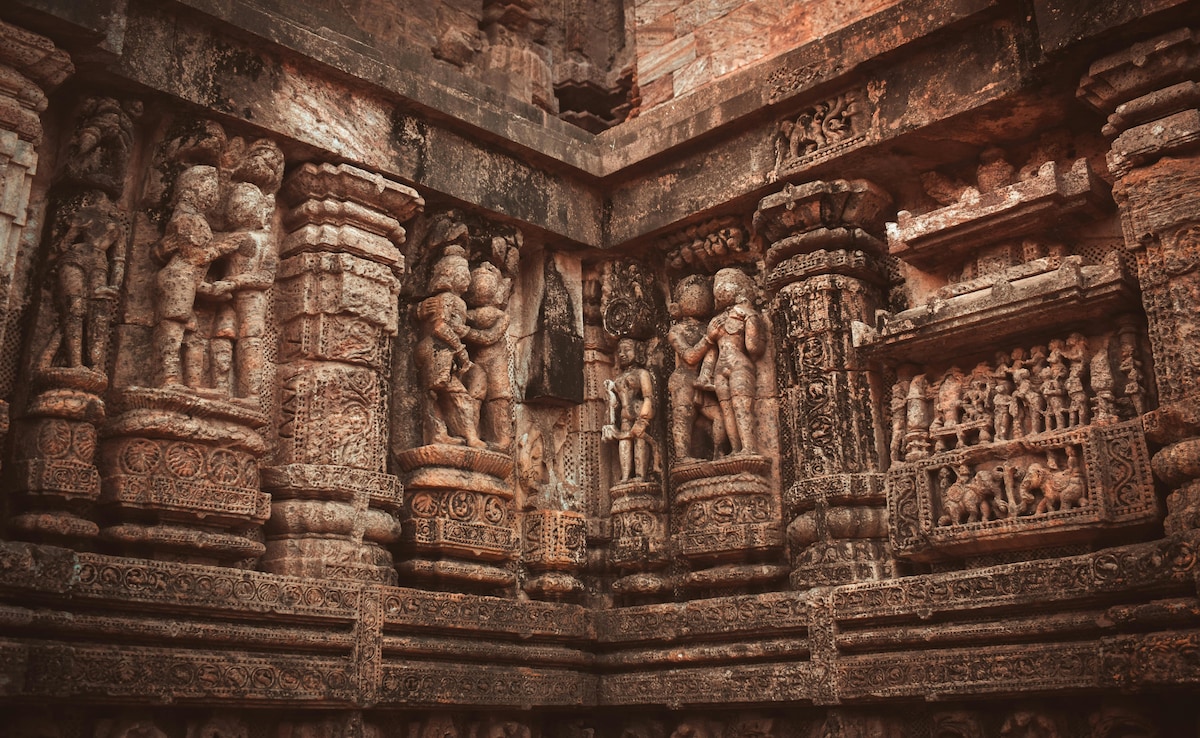
Photo Credit: Pexels
Architectural Highlights Of Konark Sun Temple:
Konark's architecture blends symbolism, scale and sculptural finesse. Though much of the original structure has weathered time, several key elements still speak volumes about its grandeur. The next sections highlight the core architectural components and their significance.
1. Jagamohana: The Audience Hall That Still Stands Tall
The jagamohana, or assembly hall, is the most intact part of the temple complex. Its pyramidal roof and intricately carved pillars showcase the engineering brilliance of 13th-century Odisha. The walls are adorned with celestial musicians, dancers and mythological scenes, offering a glimpse into the temple's spiritual and artistic life. This hall also sets the tone for the temple, connecting visitors from the outer walls to the inner sanctum.
2. Vimana and Natamandira: Collapsed Yet Revered
The vimana (main sanctum) and natamandira (dance hall) are now partially collapsed. The vimana once housed the idol of Surya and was believed to rise over 200 feet high. Its fall is attributed to structural stress and centuries of invasions. The natamandira, used for ritual dance performances, still retains its platform and carvings, reflecting the temple's deep connection to classical art forms. Together, these structures offer a bridge between spiritual devotion and cultural expression, making the temple a holistic representation of 13th-century Odisha.
3. Sculptural Brilliance: Life Etched in Stone
Konark's outer walls are a living gallery. Thousands of sculptures depict gods, apsaras, animals, warriors and scenes from daily life, like women applying makeup, musicians mid-performance, and even humorous domestic moments. The erotic carvings, often compared to those at Khajuraho, symbolise fertility, cosmic union and spiritual liberation. They connect the temple's architectural elements to the human experience, narrating stories that have survived centuries.
Also Read: Raghurajpur Travel Guide: Odisha's Hidden Gem For Culture Lovers
The Lost River Of Konark: What Happened To Chandrabhaga?
Konark Sun Temple was once believed to stand beside the sacred River Chandrabhaga, mentioned in ancient scriptures like the Samba Purana and Madala Panji. The river was considered a spiritual lifeline, believed to cure ailments such as leprosy and central to rituals such as Magha Saptami, where devotees gathered to offer prayers to the rising sun.
Today, the river has vanished. What remains is a shallow pond near the coast, where pilgrims still take a symbolic dip. Scientific studies, including satellite imagery and palaeo-channel mapping, suggest that Chandrabhaga once flowed vigorously near the temple before shifting course or drying up due to tectonic activity and coastal changes. The river's disappearance adds to the temple's mystery and links the site's spiritual past with its present-day reality.
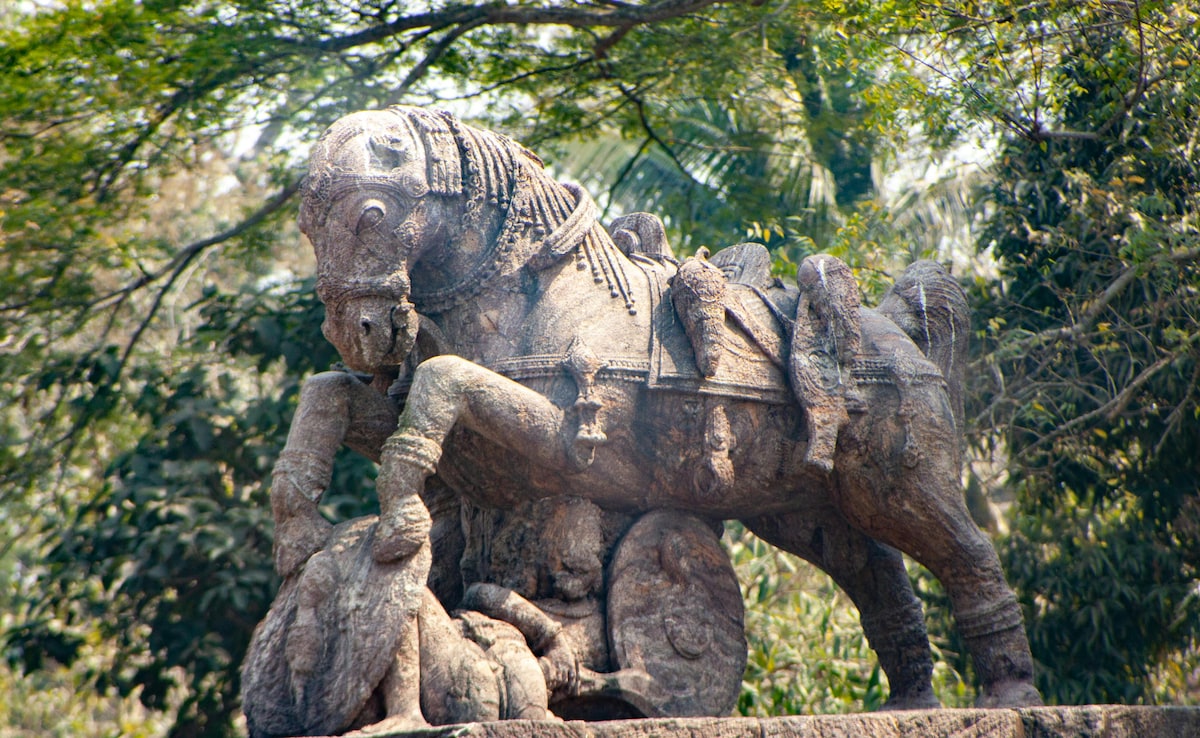
Photo Credit: Pexels
Was Konark Temple Ever Completed?
This question continues to puzzle historians. Some believe the temple collapsed before consecration, while others argue it stood for centuries. Evidence suggests that worship of Surya continued for over 300 years, structural failure may have occurred during sand removal, and invasions and natural decay contributed to its ruin. Despite its incomplete state, Konark remains one of India's most iconic temples and stands as a symbol of resilience and artistic ambition, bridging myth, history and engineering.
Myths And Legends That Surround Konark:
Konark's folklore is as rich as its carvings. These tales reflect the emotional and spiritual depth of the temple's legacy, passed down through generations. Among many stories, two stand out:
- Dharmapada's Sacrifice: The son of chief architect Bisu Maharana solved a design flaw and gave his life to protect the workers from royal punishment.
- Goddess Ramachandi's Blessing: Minister Sivai Santara received divine guidance to begin construction after sealing the river's flow with hot prasad.
These legends link the temple's architectural feats with human courage and divine intervention, enriching the visitor's understanding of its historical and spiritual context.
How To Plan Your Visit To Konark Sun Temple?
Thinking of visiting the majestic Konark Sun Temple? Whether you are a heritage enthusiast, a curious traveller, or someone seeking spiritual calm, here is everything you need to know to make your visit smooth, enriching and memorable.
Best Time To Visit Konark:
The ideal season to visit Konark is between November and February, when the weather is cool and pleasant. These months are perfect for walking around the temple complex and nearby attractions without the discomfort of coastal heat. Avoid peak summer, as temperatures can soar and the stone surfaces become harsh under the sun.
Entry Fee And Booking Details:
- Children under 15: Free entry
- SAARC/BIMSTEC nationals: Rs. 40
- Other foreign nationals: Rs. 600
Tickets are available at the site and can also be booked online via the Archaeological Survey of India (ASI) portal. Booking in advance is recommended during peak tourist seasons and festivals.
Temple Timings:
Konark Sun Temple is open from sunrise to sunset. Early mornings and late afternoons are especially magical, as the changing light brings out the intricate carvings and casts dramatic shadows across the stone chariot. If you are into photography or quiet reflection, aim for golden hour.
Nearby Attractions Worth Exploring:
Your trip to Konark is not complete without visiting these nearby gems:
- Chandrabhaga Beach: Just a few minutes from the temple, this serene stretch is ideal for sunrise views and peaceful walks.
- Ramachandi Temple: Located near the now-vanished Chandrabhaga River, this temple is steeped in local legend and spiritual significance.
- Konark Archaeological Museum: Maintained by ASI, the museum houses sculptures, inscriptions and artefacts recovered from the temple site, perfect for history lovers.
Experience The Magha Saptami Festival:
If you are visiting in February, try to align your trip with the Magha Saptami Mela. Held on the seventh day of the bright fortnight of Magha, this festival draws thousands of devotees to Chandrabhaga Beach to offer prayers to the rising sun. It is a vibrant celebration of Surya, blending spirituality, tradition and local culture.
Bonus Tip For Travellers: Hire A Local Guide
Many are trained by the Archaeological Survey of India and bring the temple's stories to life. From decoding the sundial wheels to narrating oral legends like Dharmapada's sacrifice, a knowledgeable guide can turn your visit into a deeply immersive experience.
Also Read: 6 Most Photogenic UNESCO World Heritage Sites To Visit In India
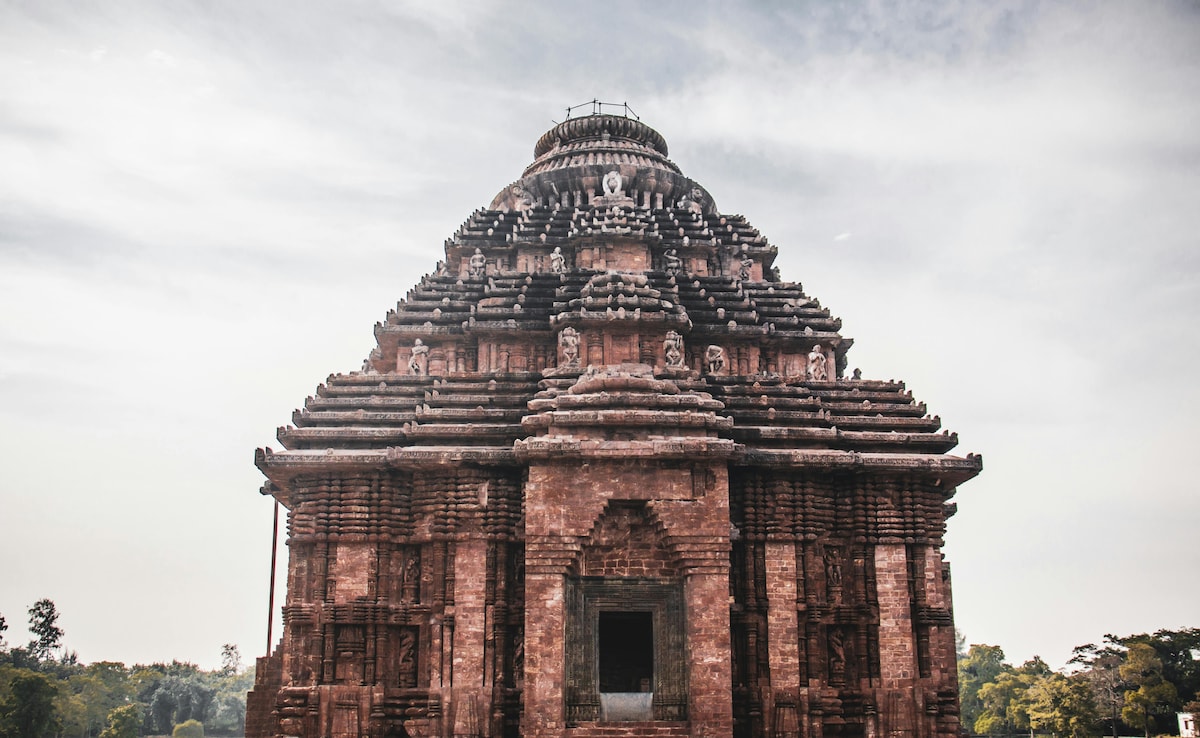
Photo Credit: Pexels
5 Surprising Facts About Konark Sun Temple:
1. The Wheels Are Sundials:
The 24 intricately carved wheels of the temple's chariot are functional sundials. Each wheel has eight spokes, representing the eight praharas (time divisions) of a day. By observing the shadow cast by the spokes, one can calculate the exact time of day. This fusion of art and science showcases the advanced astronomical knowledge of the temple's builders.
2. Stones Sourced From Distant Quarries:
Konark was built using three types of stone, chlorite, laterite and khondalite, none of which were locally available. These stones were transported from quarries located miles away, likely via rivers and coastal routes. The logistics involved in moving and assembling these massive blocks reflect the scale and ambition of the Eastern Ganga dynasty.
3. Konark Was Once A Maritime Port:
Ancient geographer Ptolemy referred to Konark as Kannagar, a bustling maritime hub. Its strategic location near the Bay of Bengal made it vital for trade and navigation. European sailors later called it the Black Pagoda and used it as a navigational landmark due to its towering structure and dark stone facade.
4. Aligned With The Sunrise:
The temple's architecture was designed to align perfectly with the sun's movement. At dawn, the first rays of sunlight would pass through the main entrance and illuminate the idol of Surya in the sanctum. This alignment was a deliberate act of devotion and astronomical precision, reinforcing the temple's cosmic symbolism.
5. Surya As A Charioteer:
Unlike most temples where deities are depicted in static poses, Konark presents Surya as a dynamic charioteer, riding a colossal stone chariot pulled by seven horses. This rare depiction symbolises the sun's journey across the sky and reflects the temple's role as a centre of solar worship. The horses are said to represent the seven colours of light, adding another layer of meaning to the design.
Also Read: 6 UNESCO World Heritage Sites In India That Are Totally Worth The Hype
Things To Remember Before You Visit Konark Sun Temple
1. Do Not Climb Or Touch The Sculptures:
The temple's carvings are centuries old and incredibly delicate. Climbing on structures or touching the sculptures can cause irreversible damage. Many of these figures are sacred and symbolic, so treating them with reverence is essential. Admire them from a respectful distance and let their stories speak through stone.
2. Photography Is Allowed, But Drones Require Permission:
You are welcome to take photographs for personal use, especially during golden hour when the temple glows in soft light. However, drone photography is strictly regulated. If you plan to use a drone, you must obtain prior permission from the Archaeological Survey of India or local authorities. Unauthorized drone use can lead to penalties and disrupt the sanctity of the site.
3. Respect The Site's UNESCO Status:
Konark Sun Temple was declared a UNESCO World Heritage Site in 1984 for its cultural, historical and architectural significance. This designation comes with global responsibility. Visitors are expected to follow guidelines, avoid vandalism, and help preserve the site for future generations.
4. Support Local Conservation Efforts:
Avoid littering within and around the temple complex. Use designated bins and carry reusable water bottles or bags to reduce plastic waste. Supporting local conservation initiatives by donating, volunteering, or simply being a mindful visitor helps protect Konark's legacy and empowers the community that cares for it.
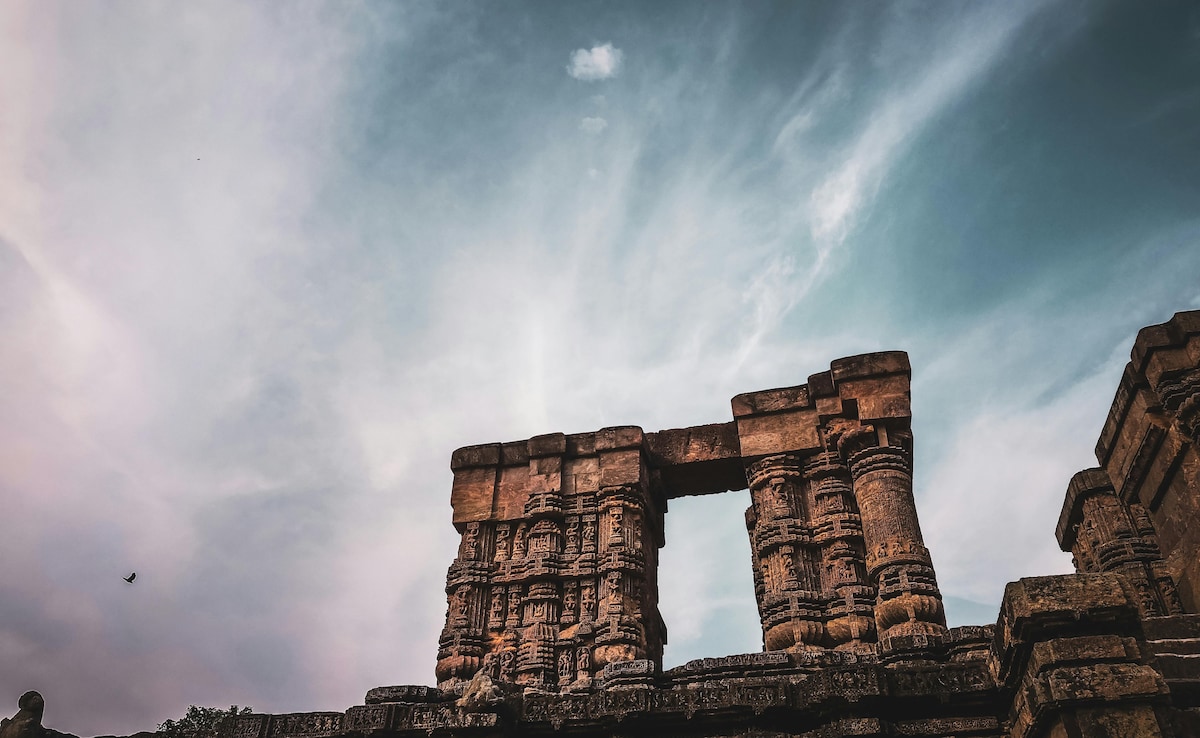
Photo Credit: Pexels
The Bottom Line: Konark Is More Than Just A Ruin
Konark is a story of devotion, engineering brilliance, and cultural resilience. It invites you to look beyond the broken stones and see the spirit that still shines through. Its intricate carvings, legends, and astronomical precision make it a must-visit heritage site on the Odisha coast.
Track Latest News Live on NDTV.com and get news updates from India and around the world

